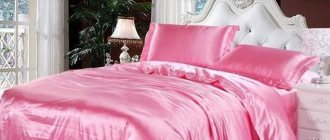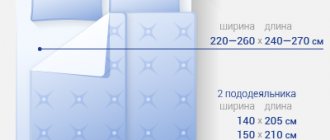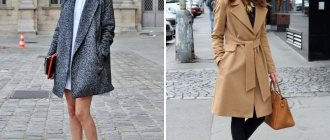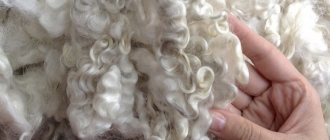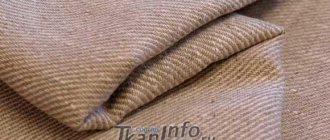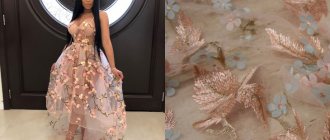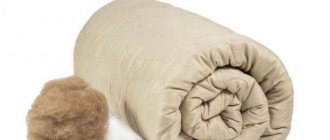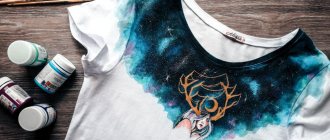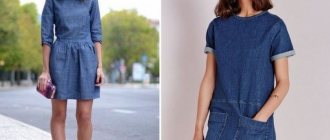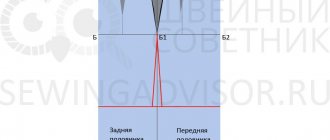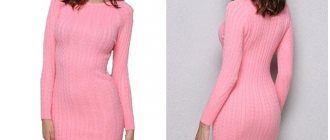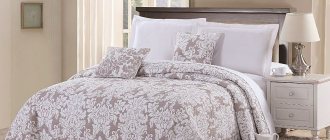Coat fabrics are intended for sewing outerwear for autumn, spring and winter.
Therefore, textiles must have certain characteristics, primarily high heat-protective properties. The range of materials for sewing coats is varied. They differ in density, texture, fiber composition, finishing and processing methods. This includes not only dense woolen, but also fairly light silk and cotton fabrics. The choice depends on the season, intensity of wear, fashion and personal preferences.
- Classification by parameters
- Wool group
- Varieties by type of raw material
- Properties and benefits of wool
- Drapes for sewing coats
- Other types and names of woolen fabrics for coats
- Cotton group
- Silk group
- How to choose material for sewing a coat
Classification by parameters
The range of fabrics for coats includes many items. But all of them can be divided into groups using the basic principles of classification.
The composition of coat fabrics in most cases includes wool. Pure wool materials are produced from high quality natural raw materials (camel and sheep wool, down of Angora and Kashmir goats). Contains no more than 5-10% chemical fibers.
For the production of wool blend varieties, two-component and three-component mixtures are used. For example, half-woolen coat cloth on a cotton base or made from blended yarn. The wool content may not exceed 20-30%, the rest is artificial and synthetic fibers (viscose, lavsan, acrylic, polyester). Cotton and silk types are suitable for summer coats.
Seasonality . Depending on the season, there are three types of coat fabrics:
- winter,
- demi-season,
- summer
Weave type . When producing wool, complex weaves are used: two-face, two-layer, pile. As a result, materials are obtained that have a number of advantages: greater thickness and density, high wear resistance, excellent heat-shielding properties. Silk and cotton fabrics are produced in simple weaves: plain, twill, satin.
Type of finishing . To improve consumer properties, textile fabric is subjected to special treatment. As a result of napping, a pile is formed on the front and sometimes on the back side. There are: lint-free (smooth surface) and pile (fluffy, soft cover improves heat-protective properties) coat fabrics.
According to color design and production method : plain-dyed, multi-colored, melange. Plain-dyed materials are a single-color, uniformly colored canvas, the color range is very diverse.
Multicolored fabrics are produced by interweaving multi-colored threads to form geometric and floral patterns. Melange is made from yarn consisting of fibers dyed in different colors.
Wool group
The largest segment on the market is occupied by wool coat fabrics. This includes pure wool and half-woolen (mixed) materials that have excellent heat-shielding properties and high density (200-800 g/m). There are types:
- coats;
- drapes;
- cloth
Varieties by type of raw material
Depending on the type of yarn used, woolen coat fabrics are divided into subgroups:
- Worsted . Made from twisted yarn. Features: distinct weave pattern, relatively low density, smooth surface, softness, low creasing. Used for sewing summer and demi-season coats.
- Thin cloth . More dense and massive compared to worsted ones. Made from thin fluffy yarn. The main feature is the textured surface; sometimes the pile covers the weave pattern (drape). They sew demi-season and winter coats.
- Rough cloth . Made from coarse fibers in plain and twill weaves. During the manufacturing process, they are subjected to rolling, which is why the surface of the canvas resembles felt. Coarse woolen coat fabrics are characterized by high density and good quality. The assortment is quite small; they make winter coats and uniforms.
Properties and benefits of wool
Despite many differences, all types of wool for sewing coats have the following properties:
- High thermal protection . The main criterion when choosing a cut for a coat is the ability to retain heat. Wool has low thermal conductivity, which means it is considered a “warm” fiber. The higher the density, the better the heat-shielding properties.
- Form stability . The ability to resist shape change depends on the elasticity and stiffness of the fibers. Thanks to the increased twist of the yarn and the special weave of the threads, dense wools hold their shape and do not sag or stretch.
- Wrinkle resistance . Coat materials made from wool and chemical fibers have the ability to quickly restore their original shape after deformation. The fabric does not form folds or creases, so it does not need ironing.
- Good vapor permeability . Wool fibers slowly absorb and evaporate moisture, therefore ensuring normal thermoregulation of the body.
- Low breathability . The thicker and denser the fabric, the less breathable it is. Therefore, wool-based winter coat fabrics provide good wind protection.
- Wear resistance . Due to the high strength and elasticity of wool and chemical fibers, resistance to abrasion, as well as to light, friction and stretching, increases.
Drapes for sewing coats
The variety of wool coat fabrics is achieved through finishing and different types of fibers in the composition.
Drap . One of the most popular types. It is distinguished by a variety of colors: melange, variegated, plain-dyed. It is characterized by high density, dimensional stability, and wear resistance. The composition can be pure wool or half-woolen (with the addition of viscose, polyester, lavsan, nylon fibers).
There are one-and-a-half-layer and two-layer coat drapes. The high heat-shielding properties are explained by the thickness of the fabric; an important condition: the bottom layer must be looser than the top. In addition, the fabric is brushed, which increases its thermal protection.
Drape-ratin . They are subjected to special processing - ratification or figured felling. The result is a fabric with pile laid in a certain order (peas, rollers, spirals, diagonal stripes). Attracts with its beautiful appearance, strength, dimensional stability, and wrinkle resistance.
Drape velor . Produced using satin weave threads. Merino wool is used as raw material. The soft pile surface causes a pleasant tactile sensation. Refers to expensive materials.
Other types and names of woolen fabrics for coats
Diagonal . Plain-dyed pure wool coat fabric with a fine ribbed pattern. It is distinguished by high elasticity and density, wrinkle-resistance.
Covercott . Dense heavy material of natural or mixed composition. Produced with twill weave. The characteristic variegated pattern is obtained by mixing several multi-colored threads. Keeps its shape well and practically does not wrinkle.
Boucle . Multi-colored material with a textured surface. Outwardly, it resembles astrakhan: a complex interweaving of threads on the surface produces knots and loops - curls. Thanks to its loose structure, it is soft, voluminous, and evokes a pleasant tactile sensation. Composition: pure wool or mixed (wool, viscose, acrylic).
Alpaca . Soft pile coat fabric made from alpaca (one of the most expensive types of wool fibers). Natural fibers are not dyed; most often, pure wool materials have a natural color that matches the color of the raw material. Lightweight, soft, yet very warm, hypoallergenic fabric has excellent hygienic properties. Blended fabrics may contain cheap raw materials (acrylic, nylon, nylon, viscose).
Cashmere . The fine wool fabric is obtained from the down of Kashmiri goats. It is characterized by softness, lightness, and at the same time perfectly warms. Natural coat fabric cashmere is considered expensive. To reduce cost and improve some properties (strength, wear resistance), synthetics are added to wool fibers: viscose, polyester, acrylic.
A mixture of different types of natural fibers is quite acceptable: silk, cashmere, alpaca. Read more about cashmere in our special issue.
Tweed . Dense coat textured fabric with light pile. A distinctive feature is small colored inclusions. Thanks to the twill weave of fibers of different densities, thickenings and nodules are formed on the surface. Soft, has high strength, dimensional stability, and practically does not wrinkle. Most often the composition is mixed: wool, viscose, acrylic, polyester.
Mohair . Soft, voluminous fabric with long, thick pile. Made from the wool of Angora goats. Thanks to their unique properties, the fibers retain their shine even after dyeing. It has high heat-protective properties, does not wrinkle, and is resistant to light. Composition: pure wool and mixed: wool fibers, synthetic threads (polyester, polyamide).
Vigon . One of the most expensive woolen coat fabrics. Soft, fluffy, light, but very warm, made from vicuna wool. Natural wool is not dyed, so it retains its natural color - light brown. Most often, lavsan and nylon fibers are added to the composition, which reduces the cost.
Plush . Soft coat pile fabric, in appearance resembles a mouton. Fluffy pile looks luxurious, is pleasant to the touch, and at the same time improves the heat-protective and windproof properties of the coat. Contains wool threads in combination with synthetic (polyester) and natural fibers (cotton, silk). An affordable option is a faux plush coat.
Cloth . The densest of winter coat fabrics, it is characterized by low plasticity and has a rigid structure. At the same time, it is characterized by high heat-protective and windproof properties. The back and front sides have a felt-like covering that completely hides the weave pattern. Expensive types of cloth are made from merino and camel wool. Mixed fabrics are widespread: wool, viscose, lavsan, nylon, nitron.
Double-sided . Main feature: two front sides. The textile fabric consists of two layers combined into a single whole. Moreover, the sides may differ in texture, color and even fibrous composition. Used for sewing coats with and without lining. If necessary, the product can be refaced.
Silk group
Coat silk fabrics, despite their lightness, have the necessary heat-protective properties to keep you warm in cool summer weather. Most often, elegant coats are made from them:
- Brocade . Heavy shiny. Produced by weaving silk and metallized threads. It has a luxurious appearance, high density, and rigidity.
- Velvet . Soft, dense with silky pile. They are made from silk fibers, but the addition of cotton and synthetic threads is quite acceptable. Mixing different types of fibers allows you to improve the properties while maintaining a luxurious effect.
- Jacquard . Dense with a large relief pattern. The pattern is obtained by complex weaving of threads that differ in color, thickness and composition. Silk jacquard looks luxurious; mixed fabrics with the addition of cotton and synthetic fibers look no less impressive.
Coat made from natural fabrics
Manufacturers also use cotton fabrics to sew demi-season coats. The most popular are two types of cotton materials: moleskin and corduroy.
Moleskine is made using a reinforced satin weave. This amazing fabric, which translates from English as “mole skin”, was first produced in England. The weavers of that time set themselves the task of creating a material that would ensure the safety of people at chemical and nuclear plants. In our country, moleskine is nicknamed “devil’s skin.” It is worth noting that the fabric does not have an elegant appearance, but it is highly reliable and low cost.
How to choose material for sewing a coat
Depending on the finish, fabric structure and fiber composition, materials included in the group of coat fabrics may have different properties. These are not necessarily thick cloth and drape fabrics, but also durable cotton and silk. The range of clothing is quite extensive: coats, short coats, jackets, long vests, warm jackets and skirts, capes, ponchos.
For sewing summer models, relatively light but dense materials with a textured surface are recommended: corduroy, jacquard, velvet. Worsted coat fabrics are characterized by a small thickness; demi-season coats are sewn from them: gabardine, tweed, covercotte, diagonal, boucle, cashmere. You can also recommend thin-woven types, for example, drape velor.
Winter and demi-season coats with insulation are made from denser fabrics. Most often they choose cloth and draperies. They are distinguished by their great thickness, density and excellent heat-shielding properties. Coat pile fabrics are widely used: mohair, plush. Fluffy and soft, they warm perfectly: the air layer formed by the villi reduces the thermal conductivity of the material.
In terms of practicality, we should highlight coat blended fabrics, which are attractive due to their low cost. Materials with a wool content of at least 20% have proven themselves well. They have high performance characteristics, while retaining the properties of wool fibers.
Elite coat fabrics include cashmere, vigon, and alpaca. They are distinguished by their luxurious appearance, unsurpassed softness, but at the same time they have a high price, are demanding to care for and are not intended for everyday wear.
Corduroy coat
Corduroy or “cloth of kings” is made from natural cotton with the addition of synthetic materials. Its peculiarity is the scars on the front side of the fabric. In addition to sewing clothes, I also use corduroy to make upholstered furniture and toys.
When choosing fabric for sewing a coat, you should pay attention to the conditions under which the textile will be used. Non-coat fabrics can also be used for sewing. For example, dress textiles are used to produce demi-season models. In addition, textured materials are used: jacquard, brocade and some Italian fabrics.
